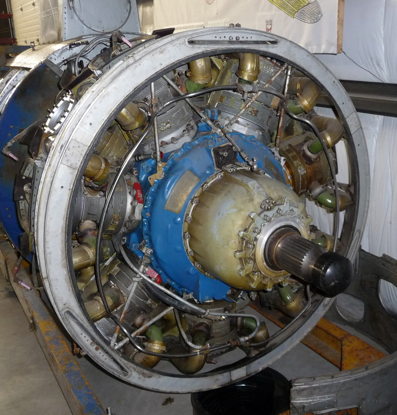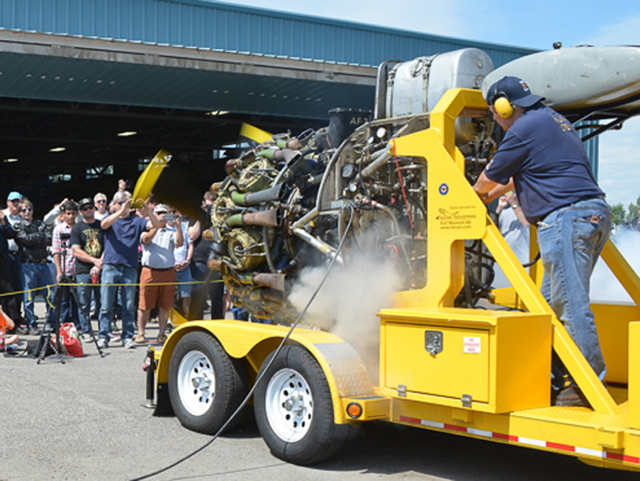 Museum
Museum  |
Bomber Command
|
Aircrew Chronicles
|
Aircrew Losses
|
Nose Art
|
BCATP
|
Lancaster
|
Media
|
Bomber Command
|
Aircrew Chronicles
|
Aircrew Losses
|
Nose Art
|
BCATP
|
Lancaster
|
Media
 Museum
Museum  |
Bomber Command
|
Aircrew Chronicles
|
Aircrew Losses
|
Nose Art
|
BCATP
|
Lancaster
|
Media
|
Bomber Command
|
Aircrew Chronicles
|
Aircrew Losses
|
Nose Art
|
BCATP
|
Lancaster
|
Media
Museum Collections
Aircraft Engines in the Collection

|
The Hercules was first produced by the Bristol Engine Company in 1939. It is a 14 cylinder, two-row, supercharged, air-cooled, radial engine with a displacement of 38.7 litres. The Hercules I developed 1,375 hp. The engine was modified during the early years of the war such that the most widely built version, the Hercules XVI, was able to deliver 1,650 hp. The engine's design employed sleeve valves in which a machined sleeve fits between the piston and the cylinder wall where it rotates from side-to-side and slides up and down within the cylinder. As it does so, ports in the side of the sleeve align with the cylinder's inlet and exhaust ports at the appropriate stages in the engine's cycle. Bomber Command aircraft powered by Bristol Hercules engines included all of the Short Stirlings, most of the Wellingtons, the Lancaster Mk. II's, and most later model Halifaxes. The Hercules XVI was the engine primarily used on the Halifax bomber Mk III and VII. This Hercules had a carburetor. When fitted to the Halifax (instead of the Merlins on earlier marks of Halifax) the aircraft became a formidable bomber. |
The most powerful Hercules engine in wartime was the fuel injected Hercules 100 that was fitted to the Halifax Mk VI. Only a few hundred Hercules 100's were built because of mass production demands. They produced 150 more hp per engine at high altitude due to the "new" fuel injection system that replaced the carburetor.
The engine was also used on the Bristol Beaufighter, a highly successful night-fighter, fighter-bomber, and torpedo bomber and the Armstrong Whitworth Albemarle.
A total of over 57,400 Hercules engines were built. It was one of the most reliable aircraft engines of the era and was well liked by both pilots and mechanics.
The museum has a total of eight Hercules engines. Two were acquired in Malta where they had been removed from a Bristol Hastings. Another four were located in Terrace, BC where they had powered Bristol Freighters. Our most recent acquisition was two more "zero-time" Hercules that were located in the UK.
These engines are part of the museum's Halifax Project.
One of the museum's Bristol Hercules has been restored to runnable condition and mounted on a trailer. It runs at museum events and is taken and is regularly displayed at air shows and other events.
